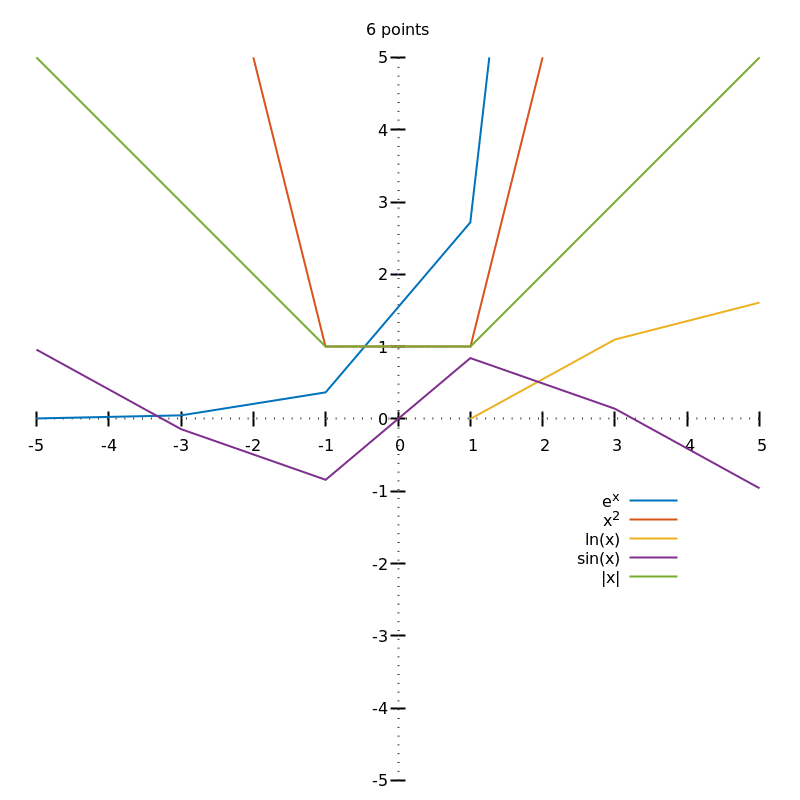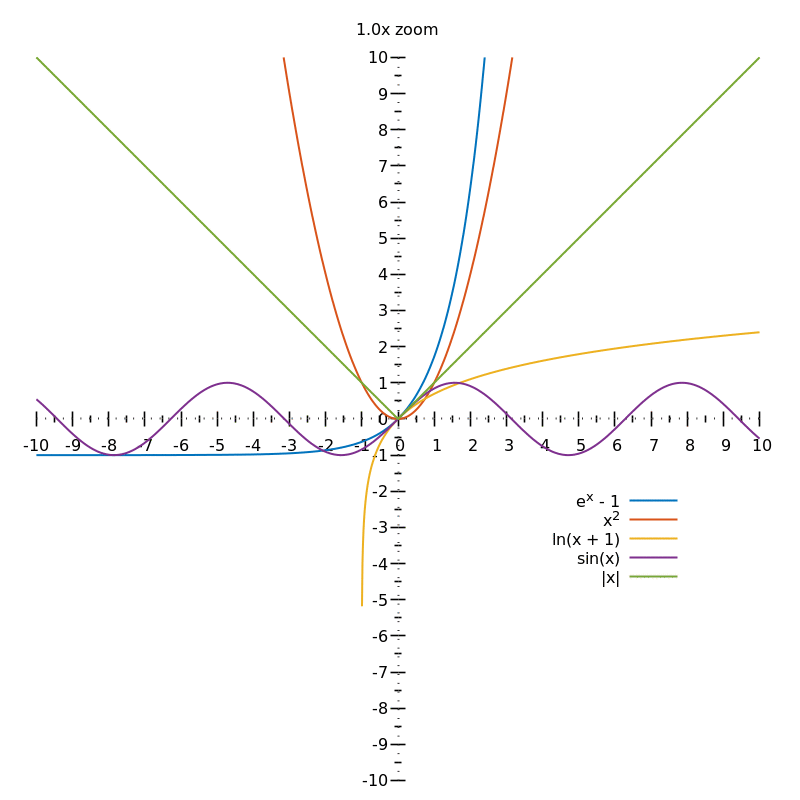Intuitively, why are the curves of exponential, log, and parabolic functions all smooth, even though the gradient is being changed at every point?
"At every point"
The gradient might change "at every point", but you need to remember that those points can be arbitrarily close to each other (see "real numbers"):

When you reduce the distance between the sampling points for $e^x, x^2, \ln(x), \sin(x)$, the gradient changes also become smaller. After a few iterations, the screen resolution isn't high enough to show any change anymore and the curves look smooth.
On the other hand, the $|x|$ curve (absolute value, the green curve on the graph) doesn't change anymore as soon as $x = 0$ is plotted: there's an abrupt change of gradient around $x = 0$, even at a very high resolution. At $x = 0$, it's not possible to define a gradient for this curve.
If you zoom infinitely on the smooth curves, they will look just like straight lines. If you zoom on $|x|$ at $x=0$, you'll always see the sharp corner:

However small $\varepsilon$ is, going from $x=-\varepsilon$ to $x = \varepsilon$ will change the gradient of $|x|$ from $-1$ to $1$.
Welcome to the subtleties of the real line.
I believe your perplexity here comes from sources similar to those which generated the ancient struggle to understand the continuous vs. the discrete. It is true that many things we consider as smooth in real life are only smooth to our crude senses; when observed under sufficiently powerful microscopes one sees varying degrees of roughness. Eventually, it boils down to whether there are actual infinities in the real world. But let us come back to curves in the plane.
You can't actually visualise these things, or imagine them precisely, because they involve infinity. For example, you cannot just comprehend the idea that there is no real number next to any fixed real number, say $0$. What real number is "next to" it? -- None. The question is meaningless in this context. This is what will keep you from having many headaches struggling to visualise inherently non-visual things. However, one can only understand these things logically.
So, to get to your question. I believe, first of all, that you've not yet grasped the fact that for plane curves, there is no next point. Thus, the gradient doesn't really change -- we only usually think of these things in terms of motion, but it should be understood as a rough, heuristic image, which under thorough analysis doesn't stand. Instead think of the gradient of, say, $\exp x$ as being different at every point on it. Now if you try to imagine this, you can't help thinking discretely; that's what we've ever experienced -- one by one aggregates. But in the real line there is no next point. Well, one way I've personally tried to come close to visualising this (it's actually impossible, but one can try to have a rough visual) is to imagine it as an infinitely elastic string, so that between any two points you always have other points so that there are no gaps (this is not true in real life, even for things that look continuous -- eventually you reach the atomic structure, where gaps abound, etc.).
So, the word "smooth" here is much stronger than how we use it in real life. The scientist who approximates water as a continuum, for example, knows it is not really so. But in mathematics it is actually the case that the real line contains no gaps, no matter how deep you delve into it (this is known as completeness). So thinking of the slope as changing from point to point is only an approximate heuristic for imagining these things. Any mathematician knows that there's nothing like point to point like we usually mean that phrase in real life. It's simply impossible to move from point to point, passing through every intermediate point, in $\mathbb R$ -- you always have to jump over some (this was the key assumption in Zeno's famous arguments against motion -- he assumed, taking things at face value, that spacetime is continuous in the strong mathematical sense). So functions on $\mathbb R$ are actually way subtler than they seem -- this actually occupied mathematicians who developed analysis in the 19th century.
I don't know that these things can ever be understood intuitively, for no one has never experienced the infinite in real life. We can only grasp it abstractly and be content with that -- or trouble oneself to no end.
In summary, smooth functions on $\mathbb R$ can be approximated at every point (you can't visualise this -- don't even try) by straight line functions because as you zoom in on an arbitrary point on their graph, the graph looks more and more like a straight line -- this is what we mean by saying they are differentiable. If you want to think of it in terms of motion, then it is really impossible, for the second derivative measures the limiting rate of change of slope at each point. So, if you think of the slope as changing from point to point, you can't help imagining a broken curve since we cannot just imagine the continuous. IOW, the graphs of those functions are "smooth" because they are differentiable at all points where they are defined. It makes no matter that the gradients may be different at each point. The triangle wave, for example, is "choppy" because there are some points at which it cannot be approximated by a linear function (i.e., no matter how much you zoom into it about a peak or trough, it always looks like a bent line, not a straight one).
Think of y as your car's position on a street. Think of x as time. Your speed will then be the derivative of position, so the steepness of the curve. Any function with 'breaks' will be like a ride with jolts, or even star trek beaming going on. But it is totally possible to have a smooth ride with your foot on the gas, changing speed all the time (accelerating).